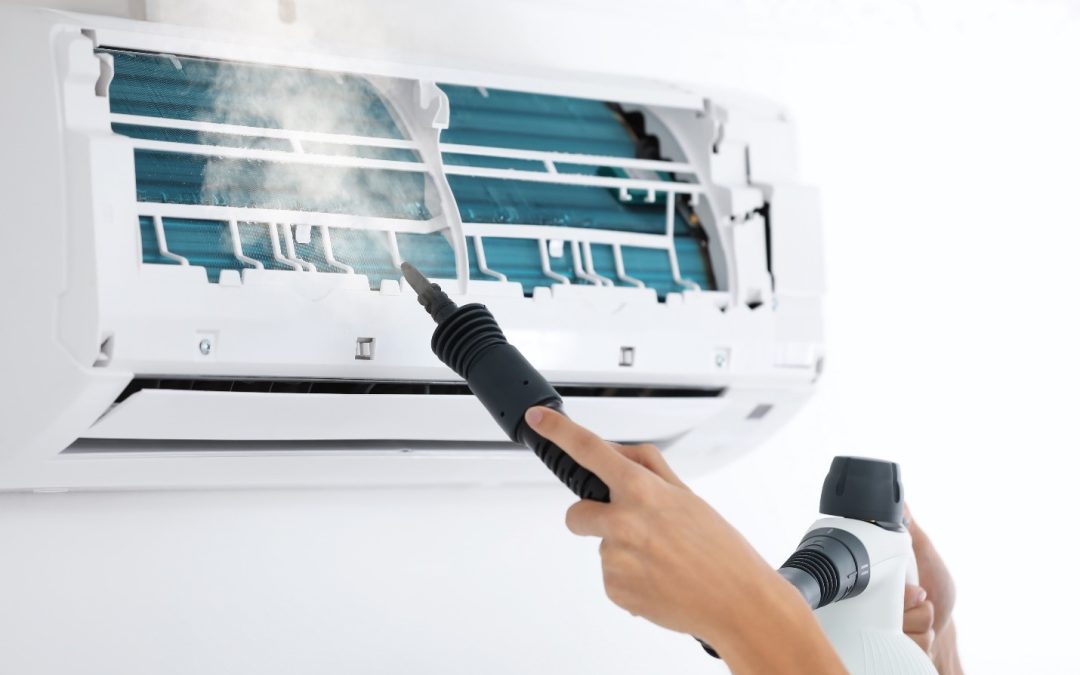How Do AC Drain Lines Function?
When the air in an AC unit is cooled, humidity is released. This humidity turns into water, which needs a place to go. That’s what the drain connection does. These drains are made of metal or Polyvinyl chloride and go straight from the air conditioner to the outside.
The drains are designed to move the water away from an air cooling system. The majority of these drains work with gravity, but some air conditioners may have pumps that do the job.
These drain lines need to be big enough to eliminate all the condensation water that builds up when the AC runs. It’s fine to have a 3/4-inch diameter, and the horizontal slope of the pipe needs to go in the discharge path. A slope of 1 percent is enough.
The water could be led to drains, sewers, grassy areas, or other places that are good for it. Make sure this liquid drains away or vaporizes easily so that it doesn’t lead to other problems like mold, mildew, or fungus that grow in damp places.
A drain or condensate line keeps the cooled space from getting too humid. Moisture that isn’t taken care of can cause mold and mildew to grow, which can be bad for your health. It can also cause the metal parts to rust.
Most air conditioners also have a drain pan that captures the water drip. The water is then released into the atmosphere from the drain pan. Some air conditioners also have built-in systems that utilize this condenser to cool the ac unit and make it evaporate.
However, this method is more often used in no-frost refrigeration units. When warm air blows over the cooler evaporator coil, it humidifies the drainpipe. This makes it a great place for algae to grow, making the drainpipe even more clogged.
What will Happen If the Drain on The Air Conditioner Gets Clogged?
Dirt and dust can get stuck in this drain line, and the water vapor can freeze in certain cases. Then, water stops moving through it, which causes moisture to build up inside the air conditioning unit.
Most newer air conditioners will turn off if the drain path gets clogged. If the drain lines are clogged, the air conditioner will also work less well. Some of the newest models of air conditioners also have sensors that let you know if the drain path is clogged and tell you what to do next.
If the drain line is clogged, ice can create on the AC coils, which then melt and goes back into the drain line. This makes the drain line even more clogged. When ice gets into an AC unit, it can do much damage to it. The water can then get into other sections of the air conditioning unit when the drain pan overflows. It can end up causing pools of water on the floor near the AC unit, which can be dangerous and damage carpets and other furniture. The water can then cause damage to parts of the house.
What Can You Do About a Clogged Drain Line?
If you have a few simple tools and are confident in your DIY skills, you can always attempt to clean the drain pipe of any blockages. Start by turning off the electricity to the unit and removing the plug from the socket for extra safety.
Now, find the drain line for the AC. It’s usually outside near the condenser unit. Push a thin, stiff brush into the free end of the drain pipe and use it to clear out any blockage or debris it finds.
Most of the time, this happens near where the drain line starts inside the unit. Use a vacuum cleaner to remove any dirt or debris you moved. Seal the drain pipe and your vacuum hose together so that it pulls out the clogged substance when you turn on the vacuum.
If you call in the pros, they will follow the same steps, but they will use the equipment for the job and not just something that will work. These experts will also clean the vent tee that helps connect the drain pipe to the drain tray. They may also apply bleach or other liquids to clean the drain line completely.
Standard AC maintenance includes cleaning the drain line. It wouldn’t hurt to do this more often, especially when the AC is on for a long time or when it’s hot and humid outside.
When homes are populated and the weather is warm and muggy, Air conditioners have to work long hours and sometimes for days. The ac system must also start up and shut down regularly to keep the cooled areas’ temperatures stable.
This constant and intermittent use can cause equipment to break down, especially if its important parts, like the condensate or discharge line, are not properly maintained and cared for. Regular preventive maintenance on an air conditioner can go a long way toward keeping it running well.
Key Takeaways
When deciding how to get rid of condensate water, it is important to consider the surrounding area’s conditions. This is done to ensure that the drained water does not impact the additional water added to your home’s environment.
Never allow this water to enter crawl spaces or another location, such as a driveway or sidewalk, where it could cause problems. It is essential to ensure that the air conditioning system is operating at the required efficiency level by performing regular inspections of the drainage pan and ensuring that the drainpipe is in proper working order.
If you have any queries, don’t hesitate to contact us! We are happy to help.

